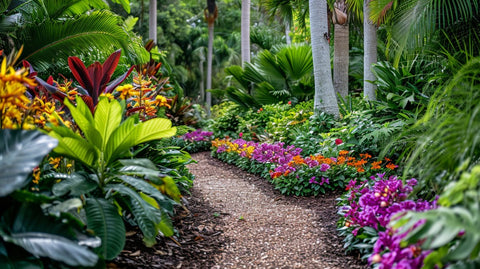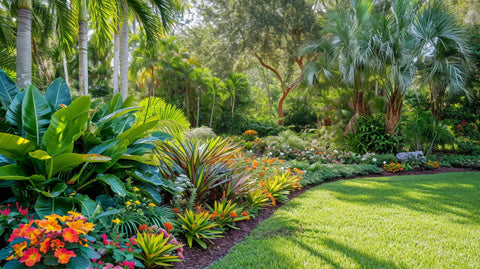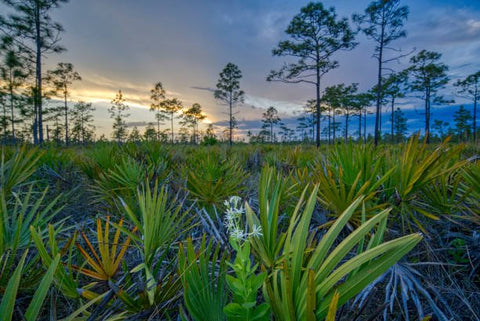Introduction

Are you looking to add some unique and vibrant plants to your garden? Look no further than the diverse and beautiful world of South Florida native plants. In this article, we will explore the importance of native plants for the local ecosystem, their characteristics, and how they have adapted to the unique climate of South Florida. We will also discuss the numerous benefits of incorporating native plants in your garden or landscape, and highlight some popular native plants that thrive in the region. Whether you're a seasoned gardener or a beginner, this article will provide you with valuable insights on how to create a sustainable and beautiful garden using South Florida native plants.
Definition of South Florida Native Plants
Before we dive into the benefits and beauty of South Florida native plants, let's first understand what makes a plant native to the region. Native plants are those that occur naturally in a particular area and have evolved over time to adapt to the local climate, soil conditions, and wildlife interactions. These plants have a symbiotic relationship with the environment and play a crucial role in maintaining the balance of the ecosystem.
South Florida native plants have unique characteristics that make them well-suited to the region's subtropical climate. They are often drought-tolerant, able to withstand high temperatures and humidity, and have mechanisms to conserve water. These adaptations make them resilient and low-maintenance, making them an ideal choice for gardens and landscapes in this region.
Benefits of Incorporating Native Plants in Gardens and Landscapes
Now that we have a better understanding of what South Florida native plants are, let's explore the numerous benefits they offer when incorporated into gardens and landscapes.
Water Conservation and Reduced Need for Irrigation
One of the major benefits of using South Florida native plants in your garden is the reduced need for irrigation. Native plants have evolved to survive on the natural rainfall patterns of the region, making them well-adapted to the local climate. They have deep root systems that allow them to access water stored deep in the soil, reducing their dependency on supplemental watering. By incorporating native plants in your garden, you can significantly reduce water consumption and contribute to water conservation efforts in your community.
Increased Biodiversity and Support for Local Wildlife
South Florida native plants provide essential habitats and food sources for local wildlife, including birds, butterflies, and pollinators. By planting native species, you can create a diverse and thriving ecosystem in your own backyard. Native plants attract a wide variety of beneficial insects and wildlife, resulting in a healthier and more balanced environment. Additionally, these plants are often more effective at supporting native pollinators, ensuring the reproduction and survival of important plant species.
Low Maintenance and Reduced Need for Pesticides
If you're tired of spending hours on garden maintenance and relying on chemical pesticides, South Florida native plants are the answer. These plants have naturally evolved to resist common pests and diseases in the region, reducing the need for chemical interventions. By choosing native plants, you can create a low-maintenance garden that requires fewer inputs and is more environmentally-friendly.
Popular South Florida Native Plants
Now that we understand the benefits of incorporating native plants, let's explore some popular South Florida native plants that can add beauty and diversity to your garden.
Tropical Sage (Salvia coccinea)

Tropical sage, also known as scarlet sage, is a stunning native plant with bright red flowers that attract hummingbirds and butterflies. It thrives in full sun and well-drained soils, making it a perfect addition to your garden's sunny spots. With its vibrant blooms and tolerance for heat, tropical sage is sure to make a bold statement in any landscape.
Coontie (Zamia pumila)

Coontie is a native cycad that is both beautiful and historically significant in South Florida. This evergreen plant has unique fern-like foliage and can tolerate a wide range of growing conditions, including full sun to deep shade. Coontie is a host plant for the Atala butterfly, an endangered species, making it an excellent choice for butterfly enthusiasts and conservation-minded gardeners.
Firebush (Hamelia patens)

Firebush is an eye-catching native shrub that adds a burst of color to any landscape. It produces clusters of vibrant red-orange tubular flowers that attract hummingbirds and butterflies. Firebush is highly adaptable and can grow in both full sun and partial shade, making it a versatile choice for gardens of all sizes.
Beach Sunflower (Helianthus debilis)

If you're looking for a low-maintenance groundcover with cheerful blooms, beach sunflower is the perfect choice. This native perennial produces bright yellow flowers and thrives in sandy and well-drained soils. Beach sunflower is highly drought-tolerant and is often used to stabilize sand dunes and prevent erosion along coastal areas.
How to Incorporate South Florida Native Plants in Your Garden

Now that you're inspired to add some South Florida native plants to your garden, let's discuss how you can successfully incorporate them into your landscape.
Researching and Selecting Appropriate Native Plants
Start by researching and identifying native plant species that are well-suited to your specific location, climate, and soil conditions. Consider factors such as sunlight, water requirements, and local wildlife attraction. Consult resources such as local nurseries, online databases, and plant identification guides to gather information and make informed choices.
Preparing the Soil and Choosing Suitable Locations
Once you have selected your desired native plants, prepare the soil by removing any weeds or invasive species that may compete with the new plantings. Amend the soil if necessary to improve drainage or nutrient levels. Choose suitable locations in your garden based on the plants' sunlight and water requirements. Grouping plants with similar needs together will help create a harmonious and thriving garden.
Maintenance Tips and Dealing with Common Challenges
South Florida native plants are generally low-maintenance, but they still require some care to thrive. Water newly planted native species regularly until they become established, and then reduce watering to mimic natural rainfall patterns. Monitor for pests or diseases and take appropriate action if necessary. Regularly prune and remove any dead or damaged plant material to promote healthy growth.
Resources for Finding South Florida Native Plants
If you're ready to start your journey into the world of South Florida native plants, there are several resources available to help you find the plants you need.
Local Nurseries and Garden Centers Specializing in Natives
Visit local nurseries and garden centers that specialize in native plants. These experts can provide guidance on plant selection, care, and maintenance specific to the South Florida region. They often have a wide variety of native plants available for purchase, making it easy to find what you're looking for.
Online Databases and Plant Identification Guides
Online databases and plant identification guides can be valuable tools for researching native plants and identifying those that are suitable for your garden. Websites such as the Florida Native Plant Society and the University of Florida IFAS Extension provide comprehensive information and resources on South Florida native plants.
Native Plant Societies and Community Organizations
Joining local native plant societies or community organizations can connect you with like-minded individuals who share a passion for South Florida native plants. These groups often host plant sales, educational events, and workshops that can help you expand your knowledge and network with fellow gardening enthusiasts.
Conclusion
Incorporating South Florida native plants in your garden is not only a sustainable choice but also a way to create a beautiful and thriving ecosystem. By choosing native species, you can conserve water, increase biodiversity, and support local wildlife while reducing maintenance and pesticide use. Whether you opt for the vibrant blooms of tropical sage or the low-maintenance charm of beach sunflower, South Florida native plants offer a range of options to suit any garden. So, why not take a step towards creating a sustainable and beautiful garden by embracing the wonders of South Florida native plants?
Happy gardening!






























Comments (0)
There are no comments for this article. Be the first one to leave a message!